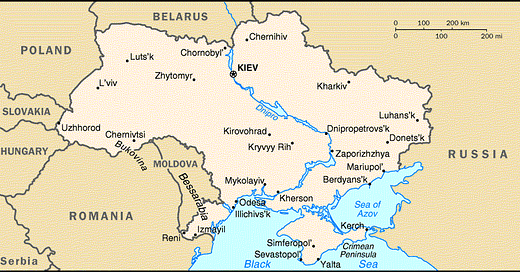Strategy and legacy
In my last article, I talked about Russian strategy, as it is taking shape right now.
Putin, when asked by Oliver Stone about his reported “wealth”, just smiled and replied to the effect that the only “wealth” that matters is the richness of one’s legacy—what one believes he or she has accomplished when he departs this world.
So, as I wrote, what matters to Putin is this “legacy”, which is the resolution of the Ukraine conflict, correcting the mistakes of the past which go right back to the time of Lenin and Stalin. If Moscow was the brain of Russia, then Ukraine was its heart.
What we know as “the Ukraine” is the key to a new and better Russia.
Stalin’s policy of “Korenizatsiia}” or “indigenization” was a mistake because it encouraged an exclusionary, separatist nationalism that easily morphed into fascism—not just in Galicia (Western Ukraine) but in Poland and the Baltics, often at the expense of other ethnicities.
Towards 2030
In my last post, I said that Putin hopes to complete the recreation of “New Russia” by the end of his current term, which is 2030 (I mistyped it as “2025”, a mistake which luckily one of my commenters —Dmitriy Milkin —picked up on!).
I expect the SMO to move into a new phase by the end of this year, with major gains, as it breaks the “Maginot Grid” of fortified villages and towns all across Donbas and Lugansk and other regions. Resolution is unlikely before 2030- but it will come.
Once logistics hubs like Prokrovsk and Chasov Yar have fallen, the next challenge is across the Dniepr in various sectors, and also other rivers elsewhere. That means crossing those rivers.
It’s called “Wet Gap” warfare for a reason. In military operations, territory doesn’t matter== but terrain does, especially control of natural barriers like rivers, which are ironically often supply routes.
The focus, of course, right now is the Dniepr, , which literally splits the Ukraine into two parts, east and west, but connects main cities, north and south. Kiev is Ukraine’s biggest city in the north, to the south is Zaproshzhya, and Kherson— all on this one big river.
The map is a little misleading — since, while Kherson is on the Dnieper, Nikolaev is not, nor Odessa—although they might appear to be.
So to get to Nikolaev from Kherson you have to cross the Southern Bug River. To get to Odessa from Nikolaev, there are more rivers in between.
Rivers, rivers, rivers.
“Wet Gap” warfare is tricky. A lot can go wrong. And there are always failures and miscalculations.
Fortunately for the Russians, Russia is also a country of rivers and they have gotten very good at this kind of stuff – far ahead of NATO or the US.
In addition to having trained for this kind of warfare and invested in developing equipment and technologies for it , the Russian military have the advantage of superiority in firepower -artillery, drones, and air power—which the Ukrainians don’t have.
To stop a “wet gap” assault, the Ukrainians need to concentrate their forces and need the protection of terrain. But they don’t have enough tanks or artillery or drones or missiles and no airpower at all.
In the initial assault, the Russians may suffer greater casualties than usual-- but after that much less. And the Ukrainians will lose more – which they cannot afford.
The Russians are not going to attack any major city.
‘Cause, “you break it, you gotta fix it”. There will be no Ukrainian Fallujahs. Nor Dresdens. Nor Hiroshimas.
Moscow wants to liberate cities like Kharkov, Zaporizhzhia, Kherson, Nikolaev, and Odessa. And finally Kiev.
The deal they offer Ukraine is so much better than Trump’s or van der Leyen’s or the Azovs. Freedom and a future.
Chappy keeps an eye on me
I have begun working on Article 4 of the Putin series which is more biographical. Chappy is keeping an eye on my progress.
I am still sending out links for the first three articles (and three others) to coffeebuyers.





One thing I've learned by following the SMO is that the Russian never do what everyone else is expecting. Might be about to cross the river, might do something completely different, like assaulting the Sumy oblast. Heck, might even drop paratroopers and marines straight into Odessa. Keeping the Ukro regime off balance and using their own actions against them is what the Russians do best.
(Just imagine how much the coke monkey and his Western patrons would freak out if they suddenly lose Odessa)
I had read about those bridges, but actually seeing tanks crossing is something different. The surface was shaking like a leaf in a high wind, and if a tank topples sideways it's goodnight for the crew.
I read somewhere that during WW2 the Soviets put up such bridges with their surface just under the water, so the Germans didn't know they were there until tanks and trucks started crossing. That must have been even scarier.